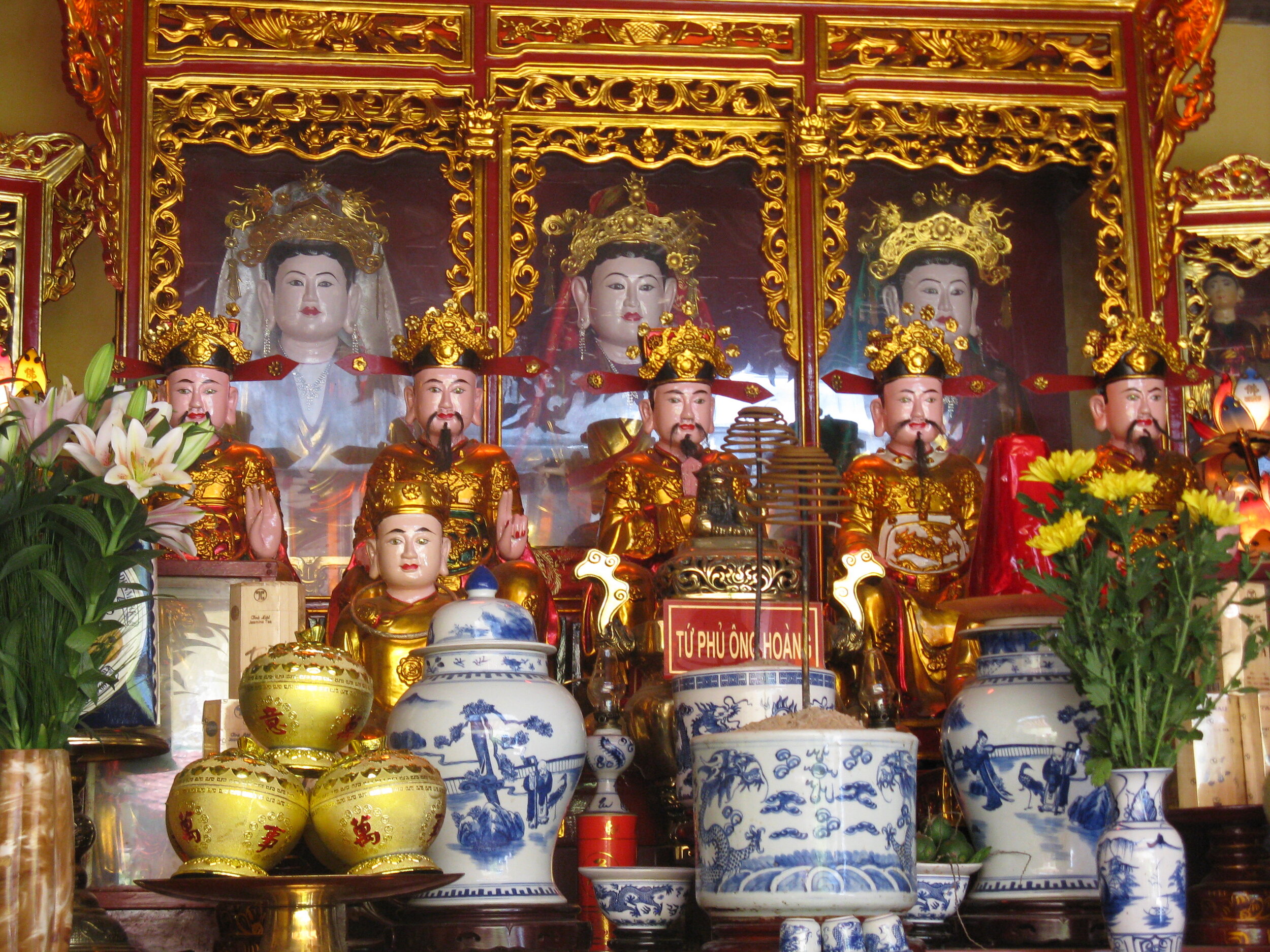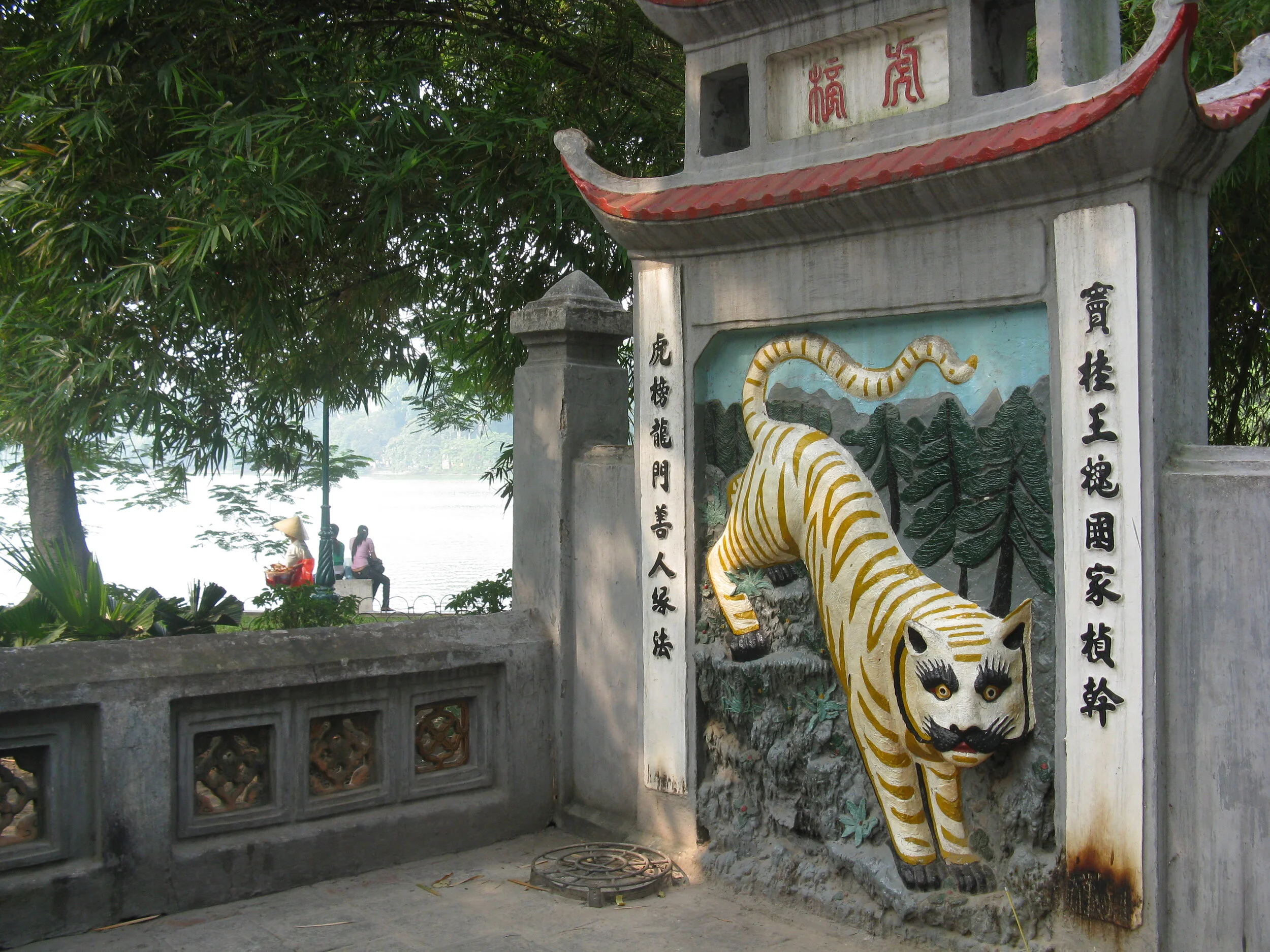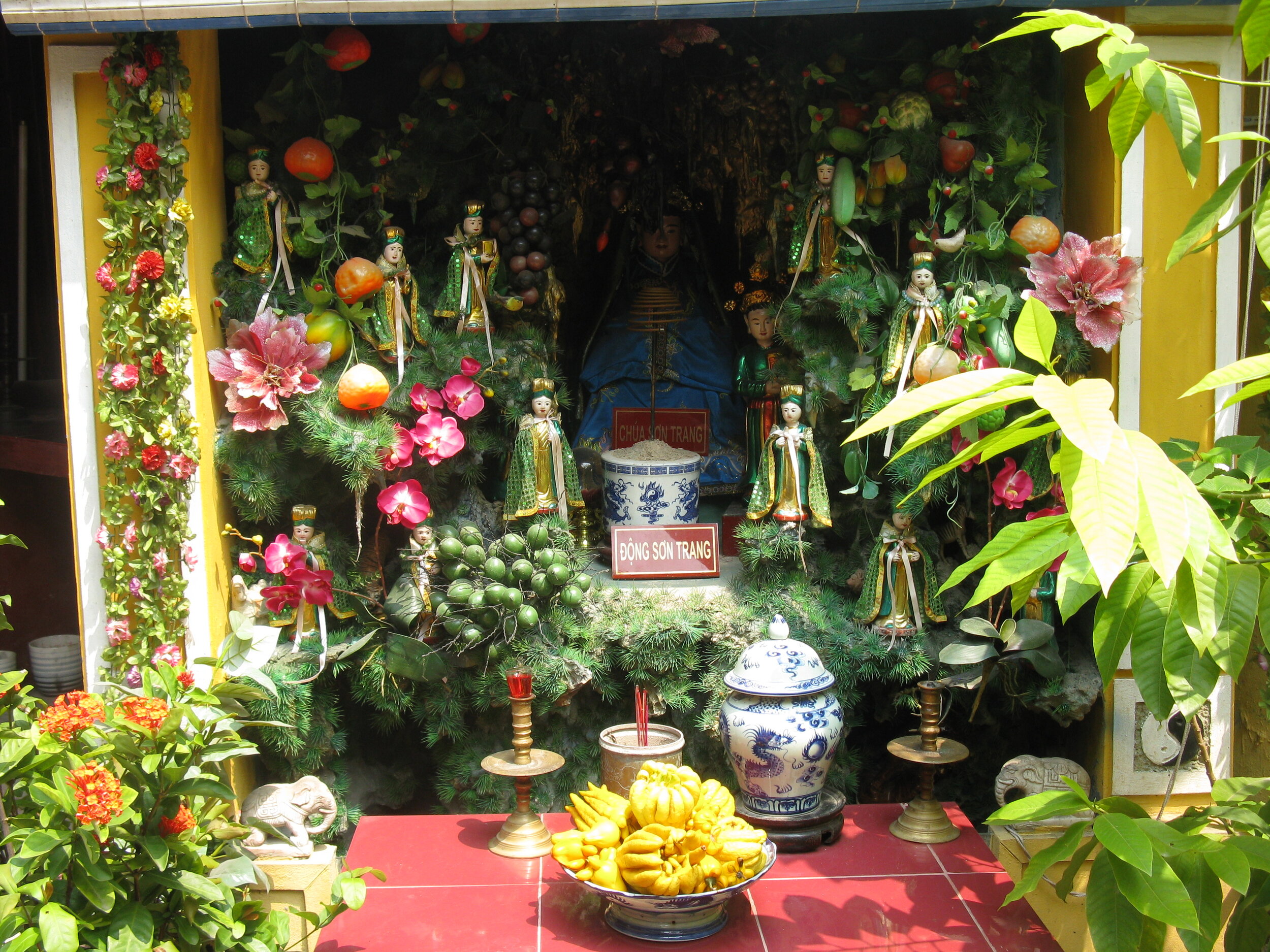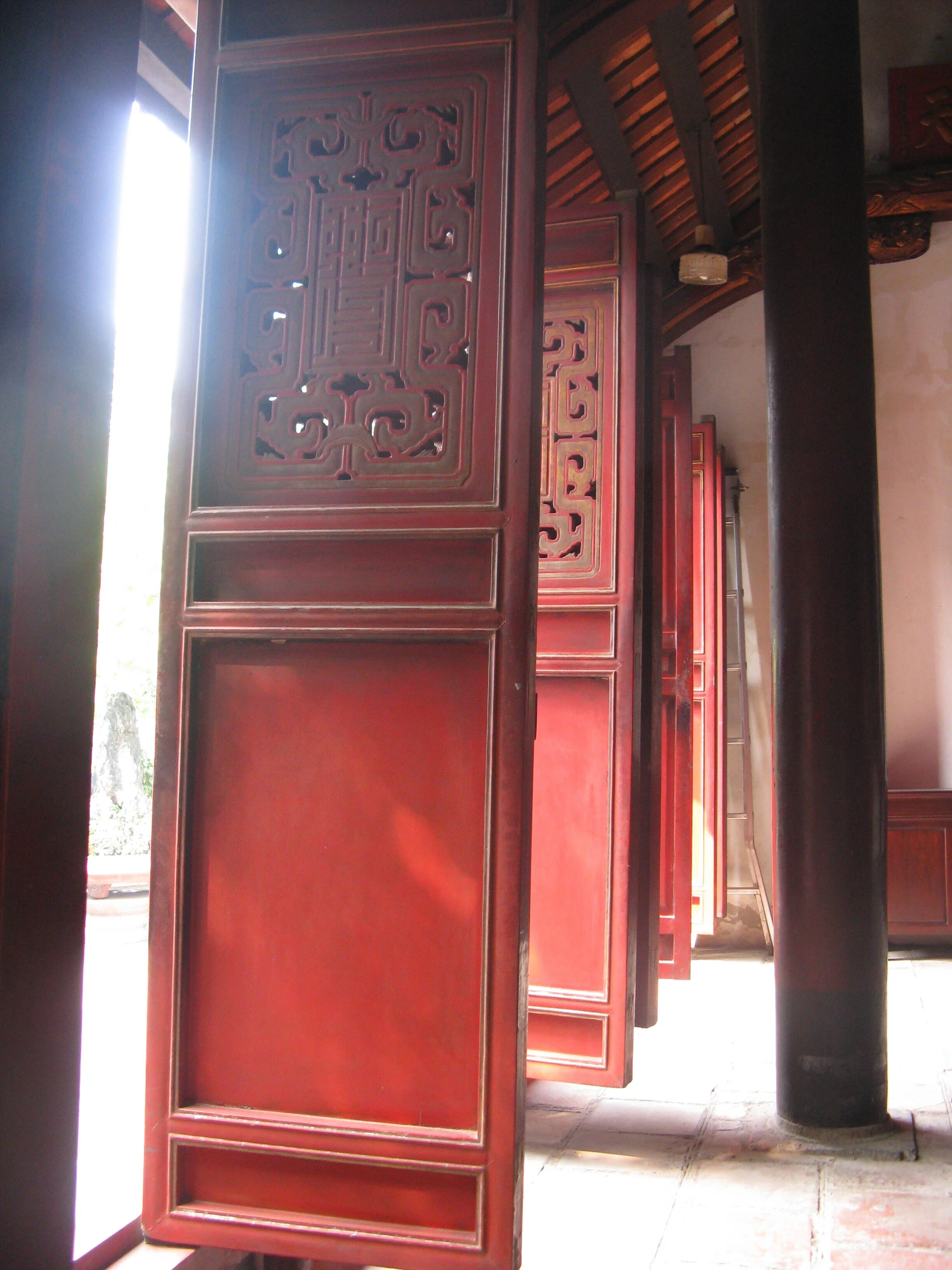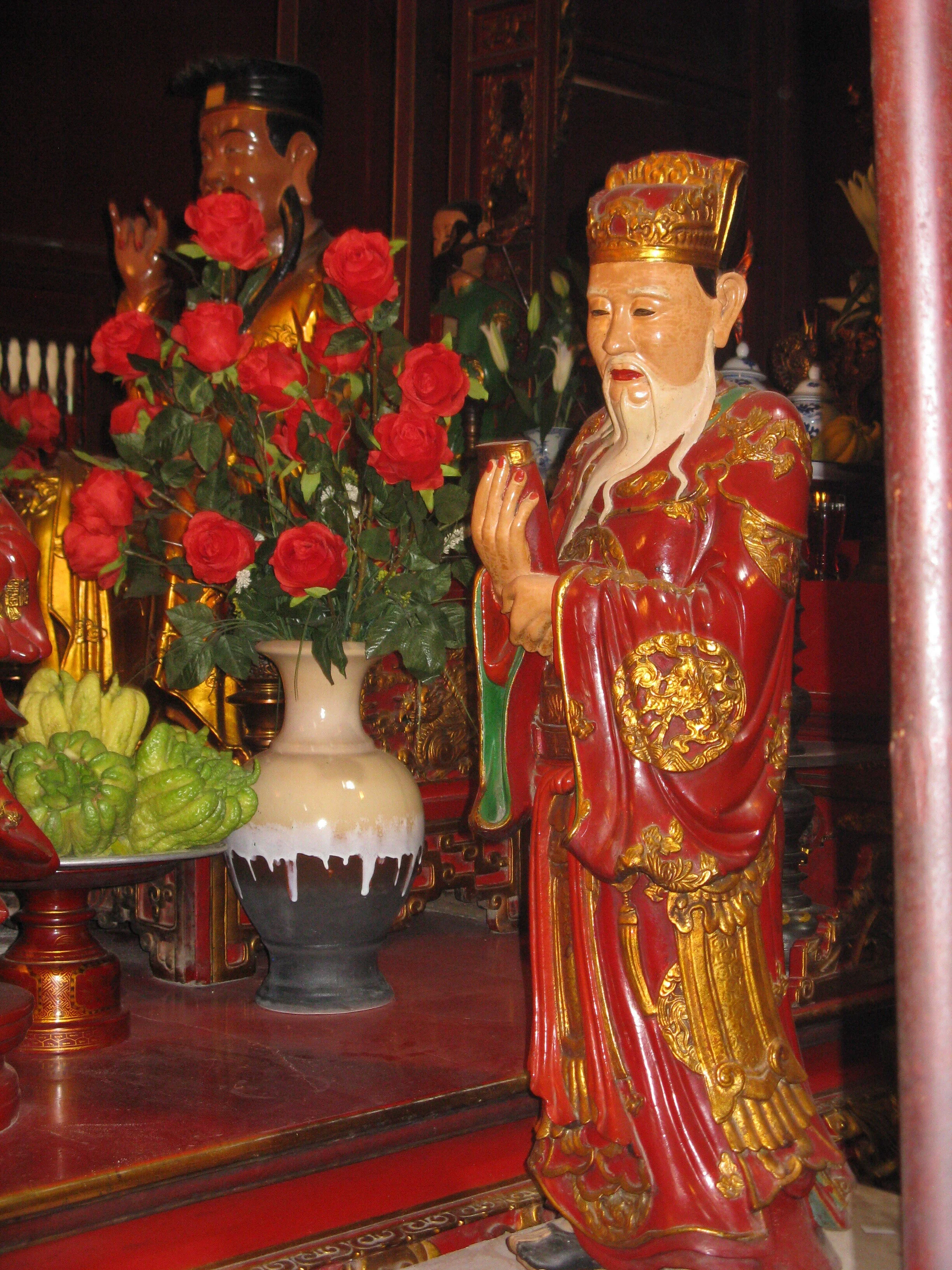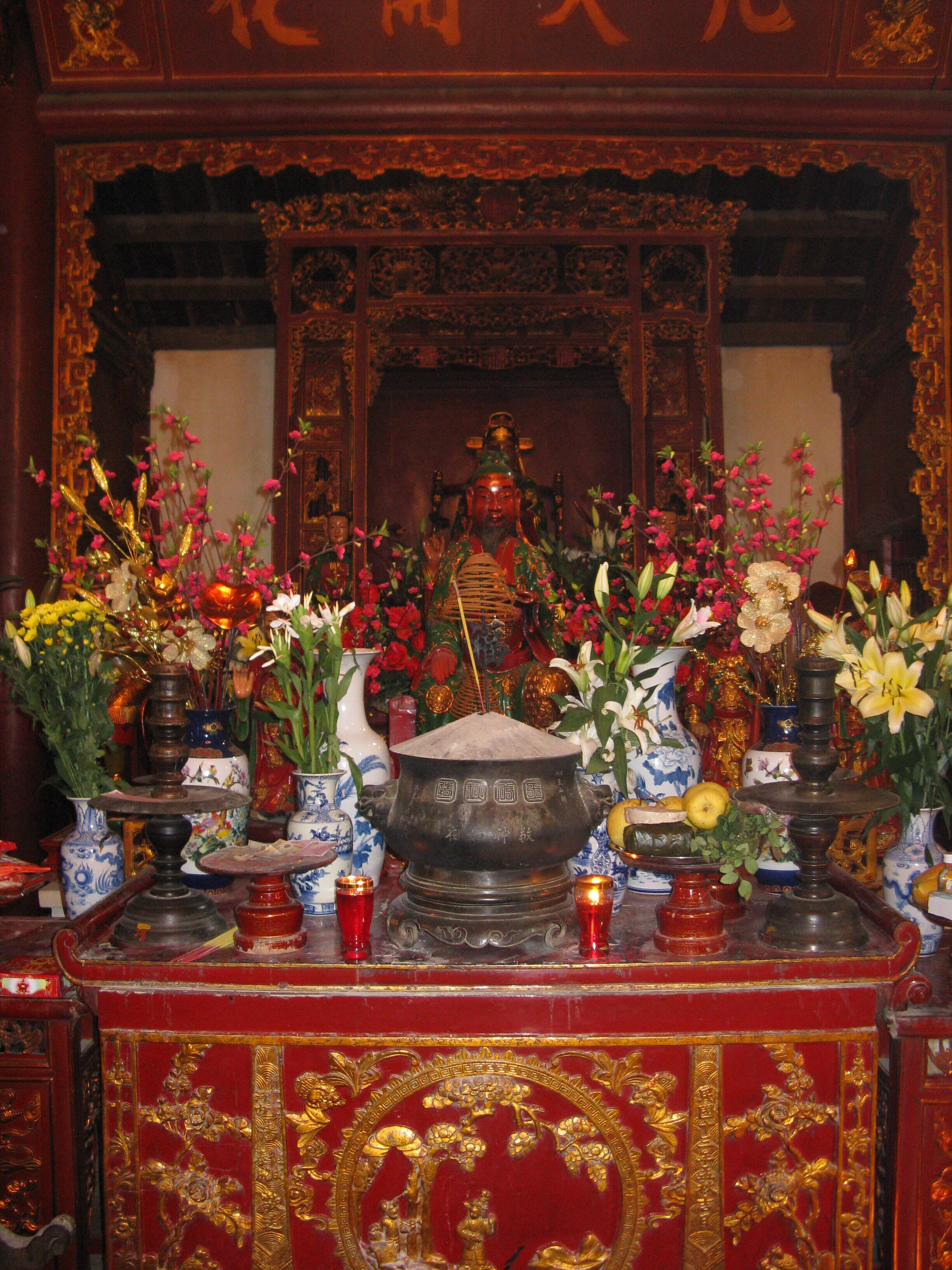Enter the gates and cross the bright red Huc Bridge over Hoan Kiem Lake to explore this Hanoi tourist attraction and see the 500-year-old taxidermied turtle.
Ngoc Son, aka the Temple of the Jade Mountain, sits on an island in the middle of Hoan Kiem Lake, in the middle of Hanoi.
If you’re staying in Hanoi’s Old Quarter, and wandering its warren of narrow streets like we did, chances are you’ll eventually end up at Hoan Kiem Lake. The small body of water is located in the historic district and known as the Lake of the Restored Sword. Its name alludes to the mythical blade wielded by Emperor Le Loi, a powerful warrior credited with liberating Vietnam from Chinese rule in 1428.
After finishing our breakfasts of toasted baguettes and instant coffee with condensed milk at the Prince II Hotel on our second day in the Old Quarter, Wally, our friend Vanessa and I headed out to visit Den Ngoc Son. One of the most-visited sites in Hanoi, the Temple of the Jade Mountain lies on a small islet off the northern shore of Hoan Kiem Lake.
Thap Ruá, or Tortoise Tower, also sits in the middle of Hoan Kiem Lake, but isn’t accessible to tourists.
Thap Rua, Tortoise Tower
This is also where you’ll find the picturesque yet inaccessible landmark, Thap Ruá, or Tortoise Tower. The structure sits on a remote island in the center of Hoan Kiem Lake and was built in 1886 to memorialize the legend of General Le Loi and Kim Qui, the golden tortoise who’s believed to fiercely protect the magical sword of the Dragon King beneath the placid waters.
One of the temple’s colorful shrines
According to historical documents within the temple grounds, Ngoc Son was established in 1841 and later renovated under the guidance of Confucian scholar-poet Nguyen Van Sieu in 1864. Its pavilions and pagoda-style shrines are dedicated to revered beings and enlightened teachers, including General Tran Hung Dao, who defeated the Mongols in the 13th century; La To, the patron saint of physicians; and scholar Van Xuong De Quan.
The first gates have Chinese characters upon them — one meaning happiness, one prosperity.
Three Is the Magic Number: Through the Tam Quan Gates
In Vietnamese culture, odd numbers bring luck and fortune, and perhaps that’s why most Vietnamese temples feature the traditional tam quan, or triple gate — which is the case at Ngoc Son.
The first gate is decorated with two large red Chinese characters — happiness on the right, and prosperity on the left. I’d like to imagine that by walking through this portal, these attributes are bestowed upon those who make the pilgrimage to the temple.
Just beyond and adjacent to the first gate is the Tháp Bút, a stone tower built in the shape of a traditional calligraphy brush, complete with nib. Erected by Nguyen Van Sieu, the totem-like monument is inscribed with the words “Tà thanh thiên,” which somehow carries this lengthy meaning: To write on the blue sky is to imply the height of a genuine and righteous person's determination and will.
The second gate has a tiger on one side, the symbol of female protection (e.g., tiger moms).
The second gate is embellished with colorful relief panels containing the Taoist symbols of yin and yang — a dragon and a tiger. The dragon represents male yang energy as power, wisdom and strength, while the tiger represents female protective yin energy.
Swimming koi carp gazing at the moon's reflection near a pine tree with roosting white cranes and are depicted on the other side and symbolize the concept of longevity — cranes are mythically believed to live for 1,000 years (koi, not so much).
The other side of the gate has cranes and koi.
Finally, there’s the third gate. Be sure to pause in front of it and look up for the curious stone resembling half a peach perched on the back of three frogs. This object is known as the Dai Nghien, or Ink Slab. It was intentionally placed here by Van Sieu and ingeniously follows the Vietnamese lunar calendar. Like something out of a Dan Brown novel or perhaps an Indiana Jones adventure, the Pen Tower aligns with the sun every May 5 (which is, incidentally, Wally’s birthday) and casts its shadow upon the sacred stone.
You can’t miss the bright red Huc Bridge, which leads to Ngoc Son Temple.
What the Huc?! Over the Red Bridge
Once Wally, Vanessa and I passed through the three gates, we crossed the graceful crimson painted wooden Huc Bridge, which arches over Hoan Kiem Lake, linking the shore with the islet.
Wally and Vanessa pause en route to exploring the temple grounds.
Another gate separates the outside world from the interior realm of Ngoc Son Temple, known as the Dac Nguyen Lau, or Moon Reflection Pavilion. It was constructed in the Taoist style and has raised relief panels depicting the kylân, or lion-horse (often mistranslated as “unicorn”). This mythical hybrid animal symbolizes loyalty and power. To the left of the kylân is a tortoise carrying a book and a sword — representing strength and longevity. Both are suitable guardians for protecting the temple that lies beyond.
Flowers and fruit are common offerings at Southeast Asian shrines.
Pagodas, Pavilions and Taxidermied Turtles, Oh My!
Inside you’ll find a mix of shrines and pavilions dedicated to various deities and philosophers. The upswept eaves of the terracotta-tiled rooftops are adorned with intricately carved dragons. Altars brim with offerings of fresh flowers, tea, fruit and money left by worshippers.
In front of the Tran Ba, the main pavilion, is a massive cauldron-shaped incense burner with stylized dragon heads on either side. The smell of incense smoke is one of my strongest memories of Hanoi — its scent permeated the humid air at all hours of the day. Incense is considered to be a sacred bridge between the visible world of the living and the spiritual realm of heaven and the gods.
Doors leading into the temple
The scent of incense wafts through the air.
There are also braziers specifically designed for burning joss paper, colorful fake currency known as ghost or spirit money. These offerings are believed to provide material wealth to deceased relatives and friends as well as deities.
Don’t miss the 500-year-old taxidermied turtle!
Today, the turtle and the sword are a symbol of Hanoi, and you’ll notice this iconography throughout the city — including the giant taxidermied tortoise on display inside the temple, which is rumored to be over 500 years old. Sadly, the lake’s last known resident tortoise passed into legend in 2016 due to pollution.
Duke and Wally fell under the charm of the Hanoi Old Quarter.
A jade demon
A holy man
If you’d like a more authentic experience like we did, I’d recommended visiting Ngoc Son in the morning. You’ll find it buzzing with worshippers and locals who come to make their offerings before their workday. As one of the most-visited sights in the Old Quarter, it can become overrun with tourists by mid-afternoon.
A gilded phoenix
Inside the temple
The entrance fee is a mere 3,000 dong or 13¢. To be respectful, consider covering your shoulders and knees before entering the temple.
Be sure to come back to Hoam Kiem Lake at night to see the Tortoise Tower lit up.
I’d also recommend walking around the lake at night to see the Huc Bridge and Tortoise Tower shimmering reflected on the surface of the water. It’s enough to make you believe in magic. –Duke
Ngoc Son Temple
Đinh Tiên Hoàng
Hàng Trống
Hoàn Kiếm
Hà Nội 100000
Vietnam



